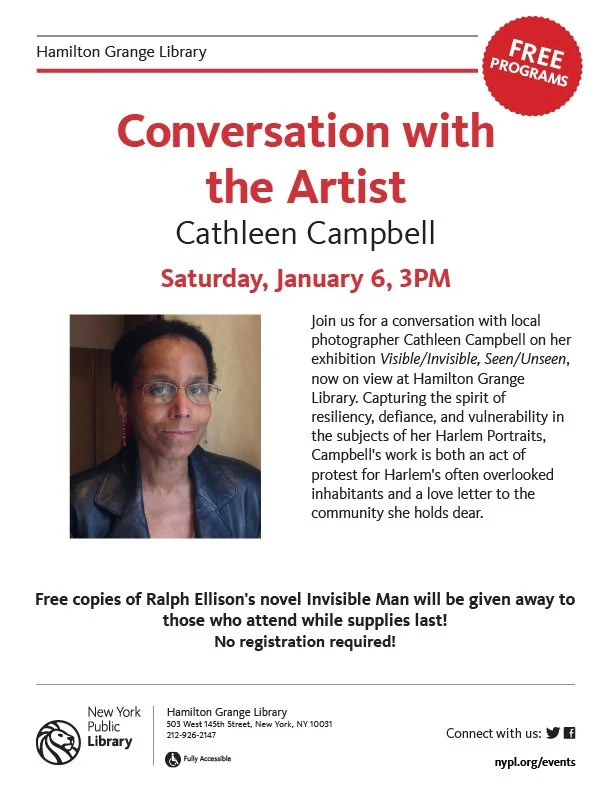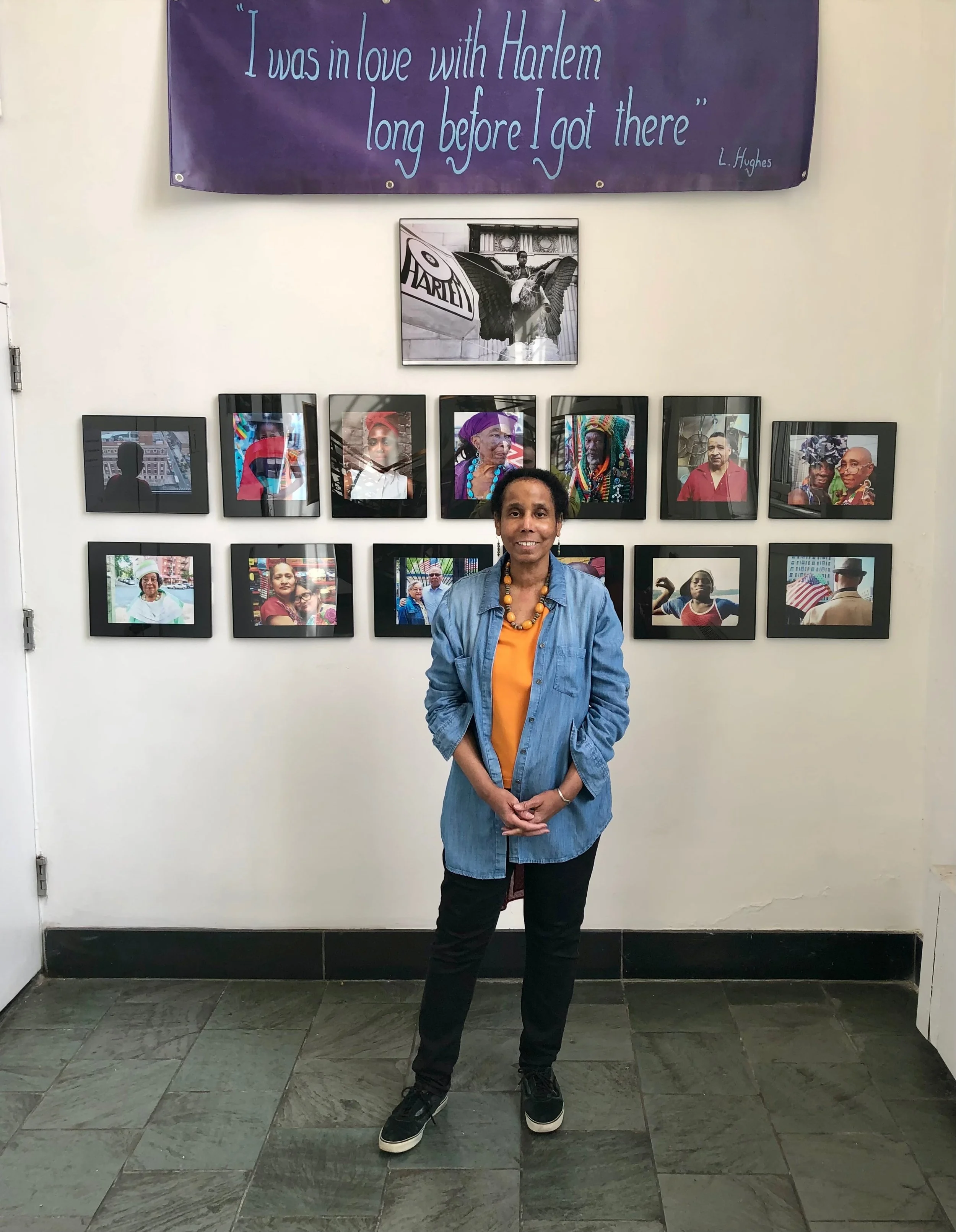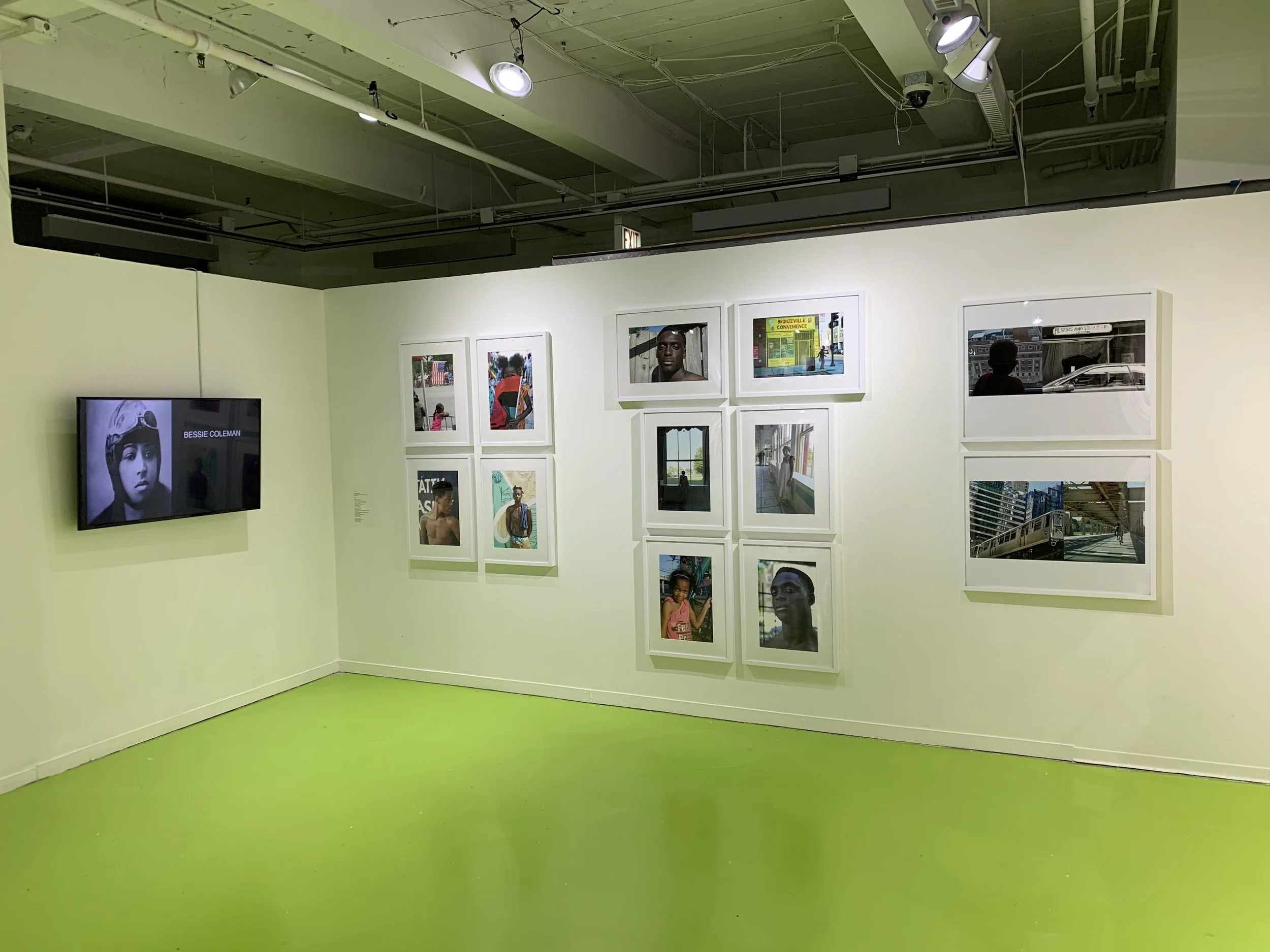RECENT EXHIBITS 2019-2024
VISIBLE/INVISIBLE, SEEN/UNSEEN: HARLEM PORTRAITS BY CATHLEEN CAMPBELL @ HAMILTON GRANGE LIBRARY, NYPL
WILDSTYLE 40 @ DEITCH NY
“Dream” at the
Hyde Park Art Center
Cathleen Campbell, “Dream/Home”
12 photographs and 2 short videos
The “Dream” exhibit at the Hyde Park Art Center is an important showcase for my work, along with the amazing work of all my fellow cohorts in the 2021 Center Program.
There are several reasons why this exhibit is so special to me. The South Side of Chicago isn’t simply my birthplace, my art is heavily influenced by my relationship to the current and former places I call home.
“Two Chicagos,” which I created in response to a question on the Center Program application, helped transform my artistic practice. (See far right of exhibit photo above, bottom image.)
“Two Chicagos” is a diptych—a mashup of two photos contrasting multi-million dollar buildings downtown with a mostly abandoned stretch of Woodlawn on the South Side. The media focuses on shootings, but I see the disinvestment in our community as an equally serious crime.
The two sides of this diptych are designed to collide. In a work addressing imbalance, the disharmony between the two halves is intended to disorient. Viewers must work harder to make sense of this image. Beyond the conflicting socioeconomic and geographic viewpoints: formally this diptych plays with geometric shapes, depth perspective, receding lines, light and shadow.
My photo diptych is a collision of opposites: both a protest and affirmation of love for the neighborhood that I lived in as a child. While creating ghostly images of how it is now, I’m haunted by memories of how much safer and more prosperous it used to be (and could be again). I acknowledge my own survivor’s guilt, both mourning and celebrating my would-be neighbors who couldn’t leave.
“Two Chicagos” explicitly addresses disparities, but in sometimes subtle ways, all of my work centers on the tension between presence and absence.
I take most of my portraits on and the South Side of Chicago and Harlem. The spirit captured in these portraits is resilience, defiance, vulnerability, and faith. Each photograph is indelibly rooted in place—yet undeniably about transcendence.
I try to create photographs that are as expressive as African-American music—from jazz, electrified Chicago Blues, rock, R & B to hip hop. The key is fusing rawness and sophistication—the sacred and profane, intimacy and alienation, love and resistance.
Biased by my perceptions as an African-American woman, I perceive everyone relating to two worlds within. I try to convey this duality and double consciousness to viewers. In each of my portraits, can you detect the ghost of the American Dream?
This “Dream” exhibit also marks the debut of a new series of short videos: “Bessie Coleman Shares the Sky.”
Bessie Coleman was the first African-American woman pilot (and South Side of Chicago resident) who lived from 1892-1926. These videos are my tribute to her. Inspired by her quote, “The Sky is the only place free of prejudice,” my videos offer an escape into the freedom and beauty of the sky.
When you view these “Bessie Coleman Shares the Sky” videos, imagine a Black woman who grew up picking cotton in the South soaring above everybody who literally tried to keep her down, sharing her flightpath for us to rise beyond, too.
Additional info about the exhibit (Click here)
Recent (Fall 2021)
“The Way We Remember” at the Wallach Art Gallery
Cathleen Campbell, “From Grief to Gratitude”
6 Diptychs and a short video
Cathleen Campbell is a Harlem-based artist, filmmaker, and photographer. Her concept for a COVID Memorial consists of three interrelated projects, which will unfold over time in three phases.
The photographic works exhibited here (which expand on Campbell’s long-term portrait series of Harlem residents) form part of what she calls the ‘‘Immediate Memorial’’ that marks the first phase of her project. It comprises photographs of COVID survivors and the family members of those who died.
In the 6 diptychs, each portrait is paired with a photographic still life composed of objects invoking the personality of the deceased, or the surviving loved one’s transferred expression of grief, and finally, hope. At times, Campbell’s work process includes close collaboration with surviving family, friends and/or neighbors to compose these still life arrangements, which she documents in photographs and videos. When such a collaboration is too painful for survivors, Campbell discreetly photographs whichever constructed or inadvertent monuments she finds. For instance, the way personal items were left on top of a dresser, thus revealing a life interrupted.
She also documents the impromptu memorials, like the garden installed by her neighbors on a West Harlem sidewalk. These discreet, yet powerful commemorations, communicate in personal terms the enormity of the loss. Consistent with defining her photographic portraits as collaborations, she often includes brief quotes from survivors in the descriptions of her photographic portraits.
Her short impressionistic video incorporates still photographs and video vignettes to explore various manifestations of the same theme, symbolically tracing the trajectory from Grief to Gratitude.
Phases 2 and 3 of Campbell’s COVID project envision an ‘‘Ongoing Memorial’’ beyond “The Way We Remember” exhibit. She will continue working on her current COVID Memorial Portraits, expanding her practice to both extend and transcend documentation, intending to share all 3 phases of this project in a way that creates enduring Connections to future residents.
Additional Info about the Exhibit (Click here)









